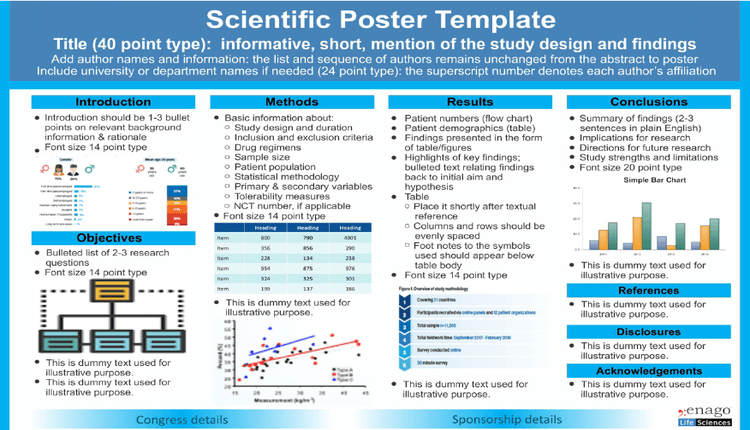Scientific Posters: An Effective Way of Presenting Research

Scientific publications such as manuscripts, abstracts, posters, and oral presentations aid in disseminating clinical data to the scientific world and maintain transparency of the research outcome and interest in a medical brand.
Publication of a manuscript in a scientific journal generates peer-reviewed citable references. Whereas, the presentation of an abstract, poster, and oral presentation at scientific conferences ensure that research data is made available in the public domain prior to the peer-reviewed publication.
Creating Effective Scientific Posters
Amongst different publication types, poster presentation is a unique mode of scientific communication. It is a popular method of presenting research findings succinctly through a combination of text and graphics. A scientific poster is a design hybrid between an oral presentation and a manuscript; it is more detailed and interactive than an oral presentation but less than a manuscript.
Poster development includes two major elements, content and layout development.
- Content development requires expertise in presenting complex data into a concise and simple form. Generally, the content is developed by a medical writer with scientific knowledge on the topic and exceptional writing skills.
- Poster layout is developed by graphic designers; they work closely with medical writers and ensure the scientific story is creatively presented in a visual format as per the conference guidelines.
A good poster conveys the research as a simple, clear story in the form of bulleted text and diagrams/images. The “W’s” (who, what, when, where, why) are an effective way to organize the elements of a poster.1
The content of the poster should interest the audience and provide them with a clear take-home message that they can grasp in the few minutes they spend near your poster. Create the title, charts, and the text to emphasize the key message. The poster starts with a title, aim, background, methods, results, and concludes with the summary of findings and their implications for research. The best poster is a perfect mix of content, color, figures, fonts, and a defined layout.
In our next article, “Most Effective Tips When Presenting Your Scientific Poster,” we will share the prerequisites and tips on how to develop a good presentable poster.
Poster illustration: An effective poster with relevant and focused content under various headings

Reference
Jane E Miller. Preparing and Presenting Effective Research Posters. Health Serv Res. 2007 Feb; 42(1 Pt 1): 311–328.
Enago Life Sciences is a medical writing company with specialization in medical communications services. We provide a full poster (print / electronic format) and encore poster development services. We work closely with the authors/client to develop the poster from initiation up to final approval. A full poster is developed within a typical turnaround time of 6 weeks (kickoff – print ready file). Keeping the focus on the target audience, our team of writers and graphic designers convert your research into a simple succinct eye-catching poster. Our highly qualified, experienced team, with an excellent knowledge across therapy and industry standards, develops posters as per the conference guidelines and good publication practices.
Click here to download an effective sample poster.










clear and to the point
very informative